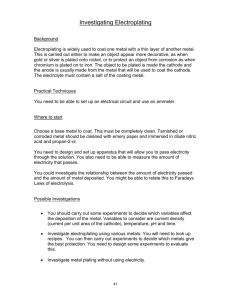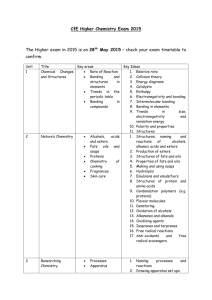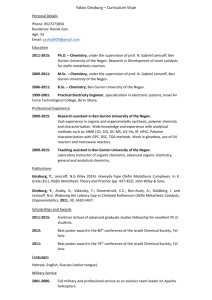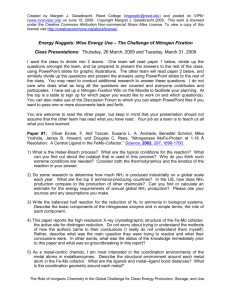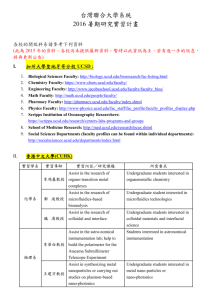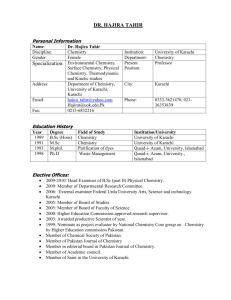CHEM 8725 Handout 1
advertisement
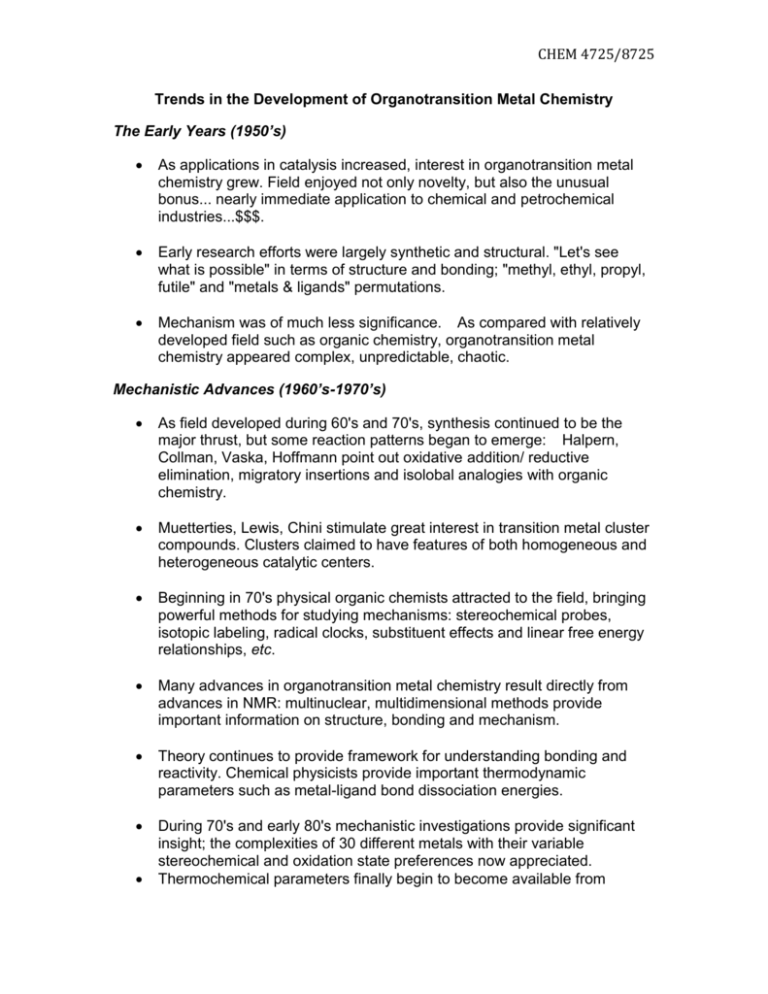
CHEM 4725/8725 Trends in the Development of Organotransition Metal Chemistry The Early Years (1950’s) As applications in catalysis increased, interest in organotransition metal chemistry grew. Field enjoyed not only novelty, but also the unusual bonus... nearly immediate application to chemical and petrochemical industries...$$$. Early research efforts were largely synthetic and structural. "Let's see what is possible" in terms of structure and bonding; "methyl, ethyl, propyl, futile" and "metals & ligands" permutations. Mechanism was of much less significance. As compared with relatively developed field such as organic chemistry, organotransition metal chemistry appeared complex, unpredictable, chaotic. Mechanistic Advances (1960’s-1970’s) As field developed during 60's and 70's, synthesis continued to be the major thrust, but some reaction patterns began to emerge: Halpern, Collman, Vaska, Hoffmann point out oxidative addition/ reductive elimination, migratory insertions and isolobal analogies with organic chemistry. Muetterties, Lewis, Chini stimulate great interest in transition metal cluster compounds. Clusters claimed to have features of both homogeneous and heterogeneous catalytic centers. Beginning in 70's physical organic chemists attracted to the field, bringing powerful methods for studying mechanisms: stereochemical probes, isotopic labeling, radical clocks, substituent effects and linear free energy relationships, etc. Many advances in organotransition metal chemistry result directly from advances in NMR: multinuclear, multidimensional methods provide important information on structure, bonding and mechanism. Theory continues to provide framework for understanding bonding and reactivity. Chemical physicists provide important thermodynamic parameters such as metal-ligand bond dissociation energies. During 70's and early 80's mechanistic investigations provide significant insight; the complexities of 30 different metals with their variable stereochemical and oxidation state preferences now appreciated. Thermochemical parameters finally begin to become available from CHEM 4725/8725 reaction calorimetry, equilibrium measurements, gas phase reaction chemistry. Mechanisms of asymmetric hydrogenation, olefin metathesis, hydroformylation defined; Monsanto develops methanol carbonylation to acetic acid, largely from academic findings...(Knowles, Sharpless, Noyori receive 2001 Nobel Prize.) Optimism continues to grow. With oil embargo comes search for alternate fuels from coal. Flurry of activity results; quest is on for a practical catalyst for conversion of syngas (CO + H2) to liquid fuels. Post Fuel Crisis: New Applications (1980’s-1990’s) Organometallic chemists unsuccessful in these efforts; price of oil lowered; quest abandoned for CO hydrogenation catalyst. For the first time, organotransition metal chemistry accused of being "a mature subject". Georges (Whitesides, Olah) encourage shift of emphasis from commodity chemicals to "fine chemicals" and materials. In mid-80's activity does begin to shift more toward activating C-H bonds and polymerization of olefins. In mid-90's olefin metathesis becomes new focus: ROMP, ADMET, RCM, cross-metathesis of olefins...amazingly versatile and functional group tolerant catalysts developed and mechanisms defined...(Grubbs, Schrock & Chauvin receive 2005 Nobel Prize.) Catalytic cross-coupling reactions gain in importance and scope...(Heck, Negishi, Suzuki receive 2010 Nobel Prize.) At turn of the century there is new interest in selective alkane oxidative functionalization to value-added products (alcohols, olefins, higher alkanes) via partial oxidation catalysis. CHEM 4725/8725 Contemporary Organometallic Chemistry (2000’s onward) A better-balanced blend of synthesis, structure and bonding and mechanism characterizes modern approaches to the field. Organotransition metal chemistry for solving issues related to energy: o C-H bond activation and functionalization of simple hydrocarbons, especially methane o Interest in syngas (CO + H2) and Fischer-Tropsch synthesis renewed. o Significant interest in biological feedstock conversion for energy, fuels, and commodity chemicals Olefin metathesis continues to be expanded in scope and application. Renewed interest in cluster chemistry (discovery of central carbide in FeMo nitrogenase, biomimetics, heterogeneous-homogeneous interface) Continued development of new reagents for catalytic transformations for use in preparing new complex molecular targets, especially chiral organotransition metal reagents for asymmetric synthesis.


